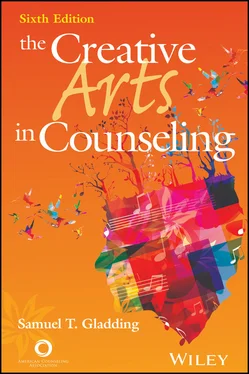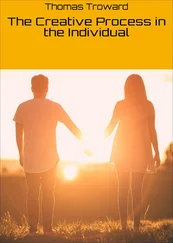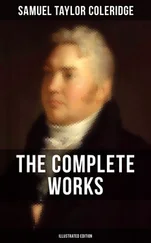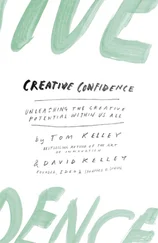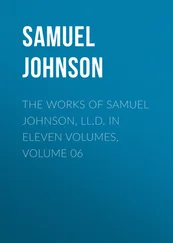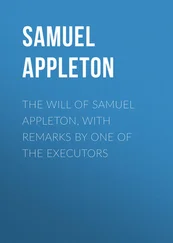Samuel T. Gladding - The Creative Arts in Counseling
Здесь есть возможность читать онлайн «Samuel T. Gladding - The Creative Arts in Counseling» — ознакомительный отрывок электронной книги совершенно бесплатно, а после прочтения отрывка купить полную версию. В некоторых случаях можно слушать аудио, скачать через торрент в формате fb2 и присутствует краткое содержание. Жанр: unrecognised, на английском языке. Описание произведения, (предисловие) а так же отзывы посетителей доступны на портале библиотеки ЛибКат.
- Название:The Creative Arts in Counseling
- Автор:
- Жанр:
- Год:неизвестен
- ISBN:нет данных
- Рейтинг книги:3 / 5. Голосов: 1
-
Избранное:Добавить в избранное
- Отзывы:
-
Ваша оценка:
- 60
- 1
- 2
- 3
- 4
- 5
The Creative Arts in Counseling: краткое содержание, описание и аннотация
Предлагаем к чтению аннотацию, описание, краткое содержание или предисловие (зависит от того, что написал сам автор книги «The Creative Arts in Counseling»). Если вы не нашли необходимую информацию о книге — напишите в комментариях, мы постараемся отыскать её.
*To purchase print copies, please visit the ACA website here
*Reproduction requests for material from books published by ACA should be directed to permissions@counseling.org
The Creative Arts in Counseling — читать онлайн ознакомительный отрывок
Ниже представлен текст книги, разбитый по страницам. Система сохранения места последней прочитанной страницы, позволяет с удобством читать онлайн бесплатно книгу «The Creative Arts in Counseling», без необходимости каждый раз заново искать на чём Вы остановились. Поставьте закладку, и сможете в любой момент перейти на страницу, на которой закончили чтение.
Интервал:
Закладка:
Creative Reflection
Sound out on a table, a chair, or your knees what the rhythm of a typical or a special day is like for you. Include the sounds of getting up, going to work or class, eating lunch, partaking in afternoon activities, returning home, and finally going to bed. What do you notice about the beat or rhythm of your life? What would you like to change or keep the same?
Improvising with music is best represented in American jazz, whether performed by clients or simply listened to. In improvising, musicians follow a plan to be playful as well as artful in their work with others. In a jazz band, for example, there are at least two parts: a rhythm section and a front line. “The rhythm section lays down the beat of the music. The front line instruments are responsible for the melodic lines and their interplay” (Barker, 1985, p. 132).
When counselors work with clients who are musically inclined, improvisation can be accomplished concretely by asking individuals to do variations on musical themes (Wigram, 2004). In these cases—and in others in which clients understand musical improvisation—individuals can play with their instruments and alter melodies (i.e., make them faster, slower, or more pronounced). The results of such transactions can then be discussed or, in some cases, left alone. In the latter situation, the process of creating and developing a relationship is seen as therapeutic in and of itself.
Composing music is a creative act that puts composers in closer touch with their feelings. “It can be used as a way of promoting many of the healing qualities inherent in creative acts” (Schmidt, 1983, p. 4). It is empowering because it gives the composer an opportunity to arrange notes in a way that is unique and personal. Composing can also be self-enhancing in that it requires perseverance and discipline that become part of a person’s self-concept after the event has occurred. For example, clients who play a musical piece representing their lives may be exhausted at the end from the intensity of the experience. However, such clients may also be quite satisfied with themselves for putting their feelings into sound and writing them down as well as playing them in an expressive and representative way.
Counselors may also request or encourage clients to engage in musically related activities such as writing a song that represents themselves, their experiences, or their feelings. For example, Bradt et al. (2019) used music therapy to help military veterans who suffered from posttraumatic stress disorder and other psychological health conditions express the themes in their lives, such as personal struggles and barriers to recovery, moving on, and positive relational challenges. “Songwriting enabled service members to share their thoughts, emotions, fears and hopes with family, friends and other providers, often for the first time, and as such played an important role in their personal growth and recovery process” (p. 19).
Music making and song writing can take many forms, such as asking clients to tap, snap, click, bang, or hum to represent different emotions. A musical group of the 1960s, the Mamas and the Papas, had a popular record album titled Make Your Own Kind of Music , which perhaps stresses the individualization of people, especially clients, in using themselves to create harmony both within and without. In some cases, musically inclined counselors may compose and play music to represent themselves to clients. Such a process, whether unilateral or reciprocal in nature, assists clients in realizing the universal power that a musical composition can generate.
Music in Counseling With Specific Populations
Music is used with a variety of populations—children, adolescents, adults, older adults—and in a number of settings—family/couples therapy, group therapy, hospitals/clinics, and educational environments. In this section, both populations and settings are covered with regard to how music is used.
Children
Children, especially preschool-age and elementary-age children, seem to love music. They spontaneously sing, listen, or play instrument-like objects such as those found in rhythm bands. Children’s natural affinity for music relates to a number of factors, including the fact that they may not have the vocabulary to express certain feelings without borrowing from a song that conveys such emotions (DeLucia-Waack & Gerrity, 2001). Their natural affinity for music can be used by counselors to promote fun, learning, good feelings, and bonding among children from diverse backgrounds. Songs can be used to “introduce a topic, begin a discussion, lead an activity, channel energy, suggest potential thoughts/feeling/new behaviors, or end a session with positive affect” (DeLucia-Waack & Gerrity, 2001, p. 280). Music may also be used to help foster changes in children who are developmentally delayed (D. Aldridge et al., 1995), who have been abused (Ostertag, 2002), or who are dealing with their parents’ divorce (DeLucia-Waack & Gellman, 2007). In the last situation, music, as an intervention, is as effective as traditional psychoeducational methods in decreasing cognitive and social anxiety and many irrational beliefs.
Music is often a primary ingredient in teaching guidance lessons. One technique that works is using music to express feelings. For example, DeLucia-Waack (2001) wrote a hands-on manual for counselors that offered a creative way to help children of divorce learn new coping skills through music. Among the topics addressed were parental conflict and family relationships, anger management, divorce-related stress, custody issues, and court scenarios. Through music, children have been helped to understand and overcome the crisis of divorce and develop in healthy ways. In another guidance approach, Gerler (1982) recommended that a counselor and music teacher work together to devise a game in which children were “teamed in groups of four and instructed to create musical ways to express feelings” (p. 63) without words or lyrics. In the case of fourth graders who carried out this task, one feeling was assigned to each group, and they were directed to devise two or three musical ways to express this emotion. Responses ranged from forming a hum-and-sniffle quartet to represent sadness to using two pianos to convey an angry musical conversation.
Creative Reflection
What music and songs do you remember from your childhood? What memories, pleasant and otherwise, do you retain from that time? How do you think the music from your childhood has influenced your life?
Besides engaging in cooperative ventures with music teachers, counselors can work on their own to find and use music that gives their students experiences involving singing, composing, or playing an instrument (R. P. Bowman, 1987; Newcomb, 1994). Sometimes all three of these types of musical expression can be combined; however, usually one modality, such as singing or composition, is used more than others. Children find singing fun and often remember main ideas of lessons by incorporating them into songs. When songs are used in guidance classes, the following procedure is helpful (B. L. Harper, 1985):
1 Introduce the words of the song as a poem.
2 Chant the words in rhythm.
3 Practice chanting the words for 3 or 4 minutes per class period until children memorize them.
4 After the children know and understand the words, play the song (it is fine to use prerecorded music).
5 Keep a double-spaced copy of the words before the children when they sing, with the verses separated from the refrain.
Outside of guidance classes, singing is also beneficial, especially for children who may have suffered trauma. This is because singing, besides being a natural behavior for humans in most cultures, may be “used as a self-help technique, a means of developing feelings of rapport with others, and a method of self-affirmation” (Mayers, 1995, p. 497). Singing a song repetitively, either alone or in a group of other children, can be ritualistic and hypnotic as well. It can alter breathing patterns and help with general relaxation.
Читать дальшеИнтервал:
Закладка:
Похожие книги на «The Creative Arts in Counseling»
Представляем Вашему вниманию похожие книги на «The Creative Arts in Counseling» списком для выбора. Мы отобрали схожую по названию и смыслу литературу в надежде предоставить читателям больше вариантов отыскать новые, интересные, ещё непрочитанные произведения.
Обсуждение, отзывы о книге «The Creative Arts in Counseling» и просто собственные мнения читателей. Оставьте ваши комментарии, напишите, что Вы думаете о произведении, его смысле или главных героях. Укажите что конкретно понравилось, а что нет, и почему Вы так считаете.
